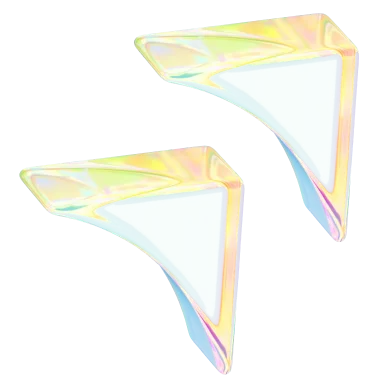How to Become an Animator in 2024: 5 Steps 💫
- Design & Creative

Learn how to become an animator in this step-by-step guide. Plus, discover the pros and cons of this profession and how much animators earn.
Embarking on the mesmerizing path of animation requires more than just a love for storytelling and drawing. It's about breathing life into characters, creating dynamic visuals, and capturing hearts through motion.
In this guide, we'll illuminate the steps to transform your passion into a profession, offering a roadmap on how to become an animator. Whether you're inspired by intricate 3D models or hand-drawn tales, we'll set the stage for you to dive deep into the world of animation, helping you cultivate skills and navigate the vibrant industry landscape. We’ll also discuss how to gain more work experience and exposure.

What is an animator? 🤔
Animators are creative professionals responsible for designing and crafting sequences of motion graphics, bringing static 2D and 3D images or characters to life through movement and expression. They also create graphics, storyboards, illustrations, and drawings to tell stories, convey emotions, or present visual information. These artists often choose to specialize in a particular animation field and style.
These days, animators work in various industries, including film and television, video games, advertising, web design, and even in sectors like healthcare and education for simulations or instructional content. Since many of them freelance, they can choose the projects and clients that best suit them.
What does an animator do? 📝
An animator juggles a wealth of responsibilities, each crucial in bringing vivid imagery and stories to life. Here's a snapshot of their central tasks:
- Storyboarding: They draft a visual sequence (or a blueprint) to outline the primary actions and transitions in the animation.
- Character and background designing: Animators craft the visual appearance, features, and settings that fit the story or message.
- Rigging: They create a digital skeleton for 3D animation models, enabling them to move fluidly.
- Animation sequences: Using software or hand-drawn techniques to create movement, freelance animators ensure smooth transitions and realistic actions.
- Soundtrack synchronization: They align audio elements like voiceovers, sound effects, or music with the animated content.
- Editing and refining: Animators adjust sequences for timing, add effects, and ensure smooth transitions to polish the final product.
- Team collaboration: They work with directors, voiceover artists, sound engineers, and other professionals to achieve a cohesive vision.
- Stay up on the latest tech: Freelance animators continually learn and update their skill sets, especially with rapidly evolving computer animation software and tools.
How to become an animator in 5 easy steps 🪜
If you’re looking to find out how to get into animation, here’s a roadmap tailored for you, detailing the essential steps to carve out your niche in the animation world and propel your freelance career forward:
1. Plan your career path 🛣️
The world of animation is diverse, offering numerous specialization areas for freelancers. Here are some of the prominent niches:
- Character animation: For audiences to fully connect to your visual, you need to develop realistic and vivid characters. This specialization involves bringing fictional characters to life by capturing their movement and emotions.
- 2D animation: This is a traditional form of hand-drawn animation, although animators create it digitally today.
- 3D modeling: This includes creating three-dimensional characters and environments using specialized software.
- Visual effects (VFX) and special effects: This involves creating illusions and simulated events, where animators transform digital imagery into believable video.
- Technical animation: This focuses on the technical aspects of CGI animation, like cloth dynamics or hair movement.
- Stop motion: Here, artists create a series of still frames using real objects.
- Forensic animation: This involves animating legal and criminal cases to recreate incidents.
2. Develop your animation skills 🖥️
Once you choose your specialty, it’s time to work on those stellar skills. Here are some vital technical and soft skills every animator needs:
- Creativity: Finding innovative ways to represent ideas can set you apart in the industry.
- Technical skills: Familiarity with animation software like Maya, Blender, Adobe Character Animator, or Cinema 4D is essential. Knowing the tools translates to more efficient work processes.
- Drawing skills: Even in the digital age, understanding basic drawing principles can significantly boost your animation quality.
- Storytelling ability: Animation is more than movement –– it's about conveying a narrative.
- Attention to detail: Capturing nuances in movement and expression can elevate animation from good to exceptional.
- Time management: You should be adept at managing multiple projects and meeting deadlines.
- Communication: You need to have strong communication skills to work cohesively with clients or in a team.
3. Earn a degree 📜
Animator requirements generally include a bachelor’s degree in animation or related fields, such as computer graphics and fine art. You can earn your bachelor’s degree online on a part-time or full-time basis. Many schools offer specialized degrees in game design or interactive media. Most colleges also offer individual courses that could help you prepare for a four-year university animation program.
But if you don’t have an animation degree, you can still pursue your passion through self-teaching, online courses, and having an impeccable portfolio. And, of course, freelancing can help you gain extensive animation experience.
4. Enroll in animation courses or certifications 🏅
If you want to gain more work opportunities as a freelancer, there are several courses you can take to broaden your knowledge. For example, you could sign up for OpenCourseWare, such as the California Institute of the Arts’ Character Design for Video Games.
Earning certifications also leads to more amazing opportunities. As new animation software becomes available, enroll yourself in an online program to learn new proficiencies that can advance your animator career.
Achieving certification in programs like Final Cut Pro X and Adobe Animate can boost your portfolio and make you a client favorite.
5. Gain experience 🧑💻
Hands-on training and internships allow you to learn client engagement and management techniques, understand your roles and responsibilities, and get an idea of industry trends.
Head to platforms like Contra, where you can craft a digital portfolio, spotlighting your unique skills and projects. This professional showcase can be the key to landing your initial assignments and your “how to get a job in animation” question.
How much do animators earn? 💰
Animators may receive a national average salary of approximately $43,900 annually. But this can vary based on a number of factors, like expertise, location, experience, educational qualifications, or certifications.
Should you become an animator? 🤓
Animation can lead to amazing opportunities for freelancers in different industries. It has its peaks of satisfaction and valleys of challenges. And if you’re an Independent ready to dip your toes into the vast ocean of freelancing, understanding these nuances is critical.
Here are a few pros and cons of becoming an animator:
Pros of becoming an animator 👍
- Boundless creativity: Animation offers diverse avenues to channel creativity, from video games to animated series.
- Rising demand: The digital era means more businesses seek animated content across various platforms.
- Increasing flexibility: Freelancing means enjoying the freedom to choose your work environment and schedule per your preferences.
Cons of becoming an animator 👎
- Stiff competition: The field is saturated, requiring skills, networking, and unique differentiation to shine.
- Evolving tech landscape: Continuous updating of skills is necessary to keep pace with changing animation technologies.
- Inconsistent income: Freelancers might face periods of irregular income, especially at the outset.
Let your creativity shine through with Contra 🌟
Stepping into the vibrant world of animation demands dedication, resilience, and continuous skill enhancement. If you believe you have the prowess to be an animator artist and are ready to embark on your freelance journey, Contra awaits you.
Join the community of Contra for Independents today, and showcase your animation talent to the world through your digital portfolio –– all while promoting your services commission-free. It's time to animate your dreams and craft stories that captivate and inspire.












